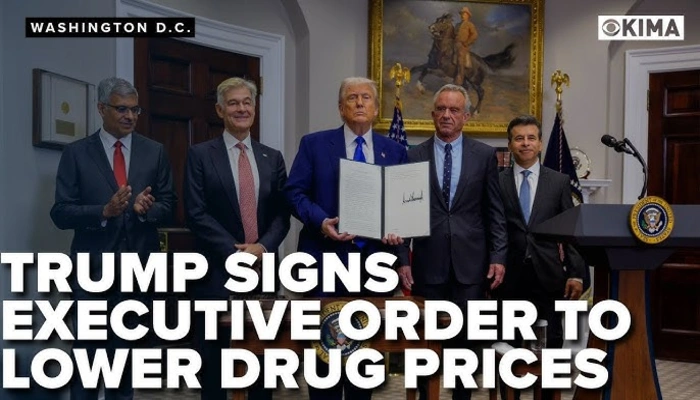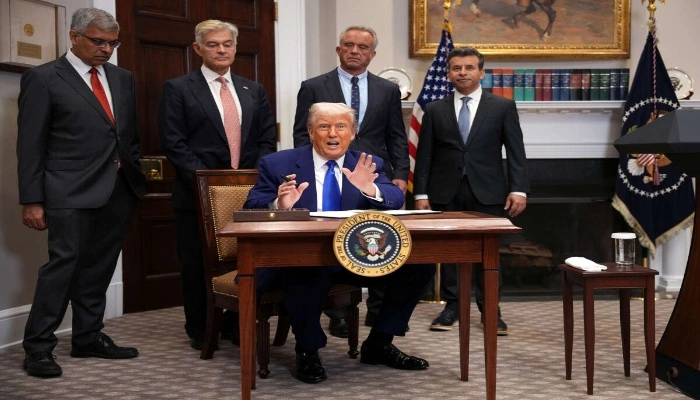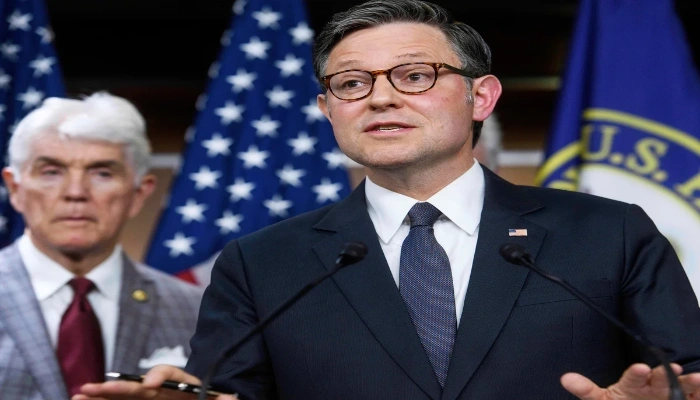
On Monday, President Donald Trump signed a new order to help Prescription Drug Prices in the United States. The goal is to make sure the government doesn’t pay more for drugs than other countries do.
During a press meeting, Trump explained that the plan will use a “most favored nation” rule. This means the U.S. will try to pay the same low prices for medications that countries like Canada or Germany pay. The order is intended to make medicine more affordable for Americans.
Trump Takes New Step to Cut Drug Prices in the U.S.
President Donald Trump announced a major change on Monday, saying the U.S. will no longer help pay for the cheaper healthcare costs of other countries. “Starting today, the United States will no longer subsidize the health care of foreign countries,” Trump said. “And we’ll no longer tolerate profiteering and price gouging from Big Pharma.”
This isn’t the first time the Trump administration has tried to lower drug prices. In 2020, Trump signed a similar order, but a court stopped it.
The cost of prescription drugs in the U.S. has been a big concern for many years. People in America often pay much more for medicine than those in other countries. A 2024 report by the nonprofit group Rand found that, on average, drug prices in the U.S. were almost three times higher than in 33 other countries. Brand-name drugs in the U.S. cost over four times more than in those countries.
What to Know About Trump’s New Executive Order on Drug Prices

President Trump’s new executive order aims to cut the high cost of prescription drugs in the U.S. by changing how prices are set and how patients get their medications. Here’s a simple breakdown of what the order includes and how it could help lower drug prices:
What’s in the Executive Order?
The order asks the U.S. Trade Representative and the Department of Commerce to look into how much other countries pay drug companies for their medicines. This is meant to help the U.S. find fairer prices.
It also tells Health and Human Services (HHS) Secretary Robert F. Kennedy to work with drug companies over the next 30 days to set new price limits prices the government is willing to pay for medications.
Another major change in the order is a plan to let patients buy medicines directly from drug companies at a “most-favored-nation” price. This means they could get the same low price as people in countries that pay the least. This would skip pharmacy benefit managers or “middlemen” who Trump said drive up costs.
The order is part of a larger effort to make sure Americans pay fair prices for the medicines they need.
Trump’s Order Targets Drug Companies That Don’t Lower Prices
Under President Trump’s new executive order, drug companies that do not offer the lowest global prices, also known as “most-favored-nation” pricing, could face tough actions. While the order doesn’t say exactly what these actions would be, it promises to take strong steps to bring down costs for American consumers and stop unfair pricing practices.
This new order is broader than the one Trump signed during his first term. It would apply to drugs covered by Medicare, Medicaid, and even private insurance plans. That means more Americans could benefit from lower drug prices if the plan is fully put into action.
Trump Tries Again to Cut Drug Prices. Will It Work This Time?
Former President Donald Trump is once again pushing to lower drug prices with his “most favored nation” plan, but there are questions about whether it will succeed.
Trump first tried this strategy during his final months in office back in 2020. At the time, he signed an executive order to make the U.S. pay less for certain drugs, but the courts blocked the move.
At the new signing event on Monday, Trump said the earlier order was only a small step. “Five years ago, I signed an executive order to confront this disaster, but only confront it in a minor way,” he said. “It was a good confrontation, but never to this extent.”

This time, the order is larger in scale and covers drugs under Medicare, Medicaid, and private insurance. Still, it’s not clear if the plan will hold up legally or face the same court challenges.
Dr. Mehmet Oz, who now leads the Centers for Medicare and Medicaid Services, said the administration will be talking with drug companies over the next month to agree on what the most-favored-nation prices should be. “We’re looking forward to a thoughtful interaction with these corporate leaders,” Oz said. “Many of them admit quietly that the system is broken.”
HHS May Step In If Drug Prices Don’t Drop
As part of President Trump’s new plan to lower drug prices, the government is giving pharmaceutical companies a chance to work together on fair pricing. But there’s a warning: if “adequate progress” isn’t made, the Department of Health and Human Services (HHS) will take stronger action.
If drugmakers don’t agree to lower prices, HHS will create a new rule that forces companies to match the lowest prices found in similar countries. This means the U.S. could soon pay the same or even less than other nations for prescription drugs.
Pharmaceutical Industry Criticizes Trump’s Plan
President Trump’s new executive order to lower drug prices has drawn strong criticism from the pharmaceutical industry, which is already dealing with planned tariffs on prescription drugs.
Trump acknowledged that the pharmaceutical lobby is one of the most powerful in the world. “I’m doing this against the most powerful lobby in the world, probably: the drug lobby,” Trump said during the signing. “But it’s one of the most important orders, I think, that’s ever been signed, certainly about health care.”
The industry’s top lobby group, PhRMA, quickly pushed back, calling the plan a “bad deal” for American patients and workers. Stephen J. Ubl, PhRMA’s president and CEO, argued that importing prices from countries with government-run healthcare systems would hurt American patients. He warned it could lead to fewer treatments and job losses, as companies might cut back on investments in the U.S.
Ubl also said the real problem is that foreign countries don’t pay their fair share for medicines, and middlemen in the U.S. drive up prices. He believes that addressing these issues would help lower drug costs without relying on foreign pricing.



